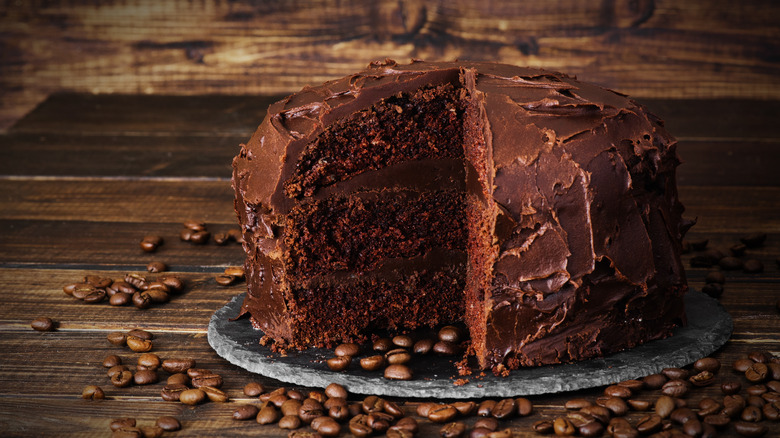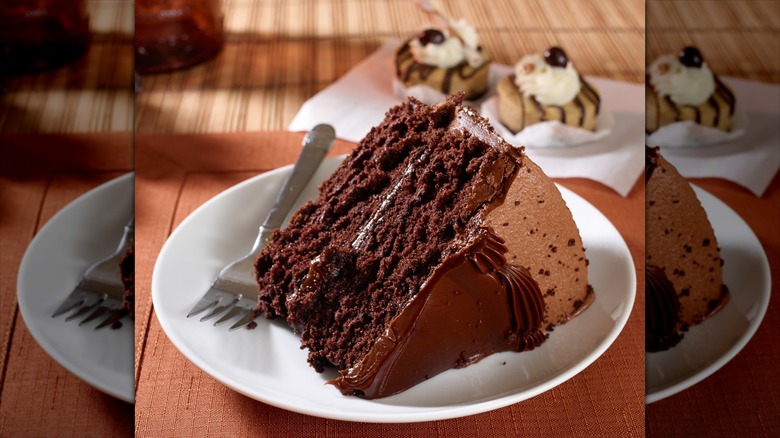The Debated Origins Of Devil's Food Cake
America has a history of baking sweet and celebratory cakes reaching back for generations — but if you spend any time digging into the history of classic cakes like strawberry shortcake, Boston cream pie, or red velvet, you begin to see that there are often conflicting sources claiming to have created the very first. The debated origins of devil's food cake are no exception to this trend, sparking conversation to this day about what region of America this confection hails from, why it's associated with the color red, and why it's considered "deviled."
Often juxtaposed side by side in cookbooks with its antithesis, angel food cake, devil's food cake originally was a chocolate-flavored, reddish cake that may have been colored and moistened with red beets, some suggest it hails from the American South (via What's Cooking America). Cooks Info mentions an alternative claim, suggesting this decadent treat was first made famous by the opulent Waldorf Astoria Hotel in New York between the 1920s and 1950s, but most historians agree this is a myth.
Cooks Info cites the earliest confirmed mention of the cake as the 1902 publication "Mrs. Rorer's New Cook Book," by Sarah Tyson Rorer, though it wasn't until 1913 that it was mentioned by its current name in cookbooks. However, South Florida Reporter suggests that before it was known as "deviled" cake, the recipe may have originated as early as 1898 in an edition of a newspaper in Hagerstown, Indiana.
How did devil's food cake get its name?
So, where did devil's food cake get its name? In truth, nobody knows for certain, though there are several theories.
The first is that devil's food cake was created as a counterpart to its predecessor, angel food cake. Light, fluffy, and vanilla-flavored, traditional angel food cake relies on beaten egg whites for its characteristic spongey, airy texture. In contrast, devil's food cake is dense, moist, and made with chocolate for an opposite appeal (via Cooks Info). The two were often published side by side in cookbooks and, while this might be convincing evidence for some, others point out that the two cakes actually have very little to do with each other.
Another explanation is the reddish tint of the cake coming from the beets (and later, Cooks Info points out that the red hue was caused by alkaline). Some speculate that the reddish sponge reminded folks of the devil — and in fact, this cake is often mistakenly interchanged with red velvet cake.
While traditionally the word "deviled" before a food (as in the case of deviled ham or deviled eggs) is used to describe something spicy and piquant, this cake appears to be an exception to the rule (via Southern Living). Perhaps the simplest answer is the sheer richness of the cake itself was thought to be so sinfully indulgent, it could only be called devilish.

